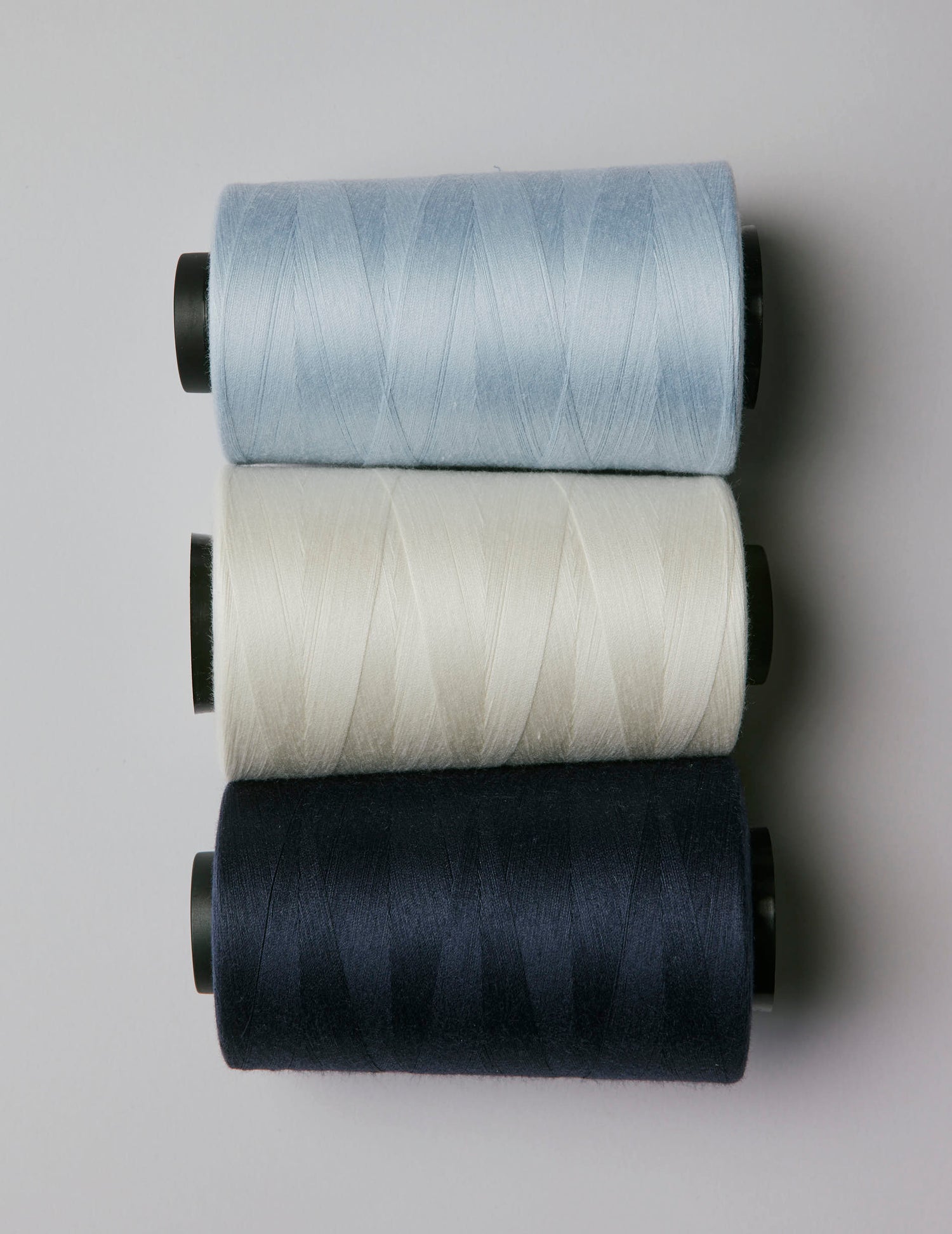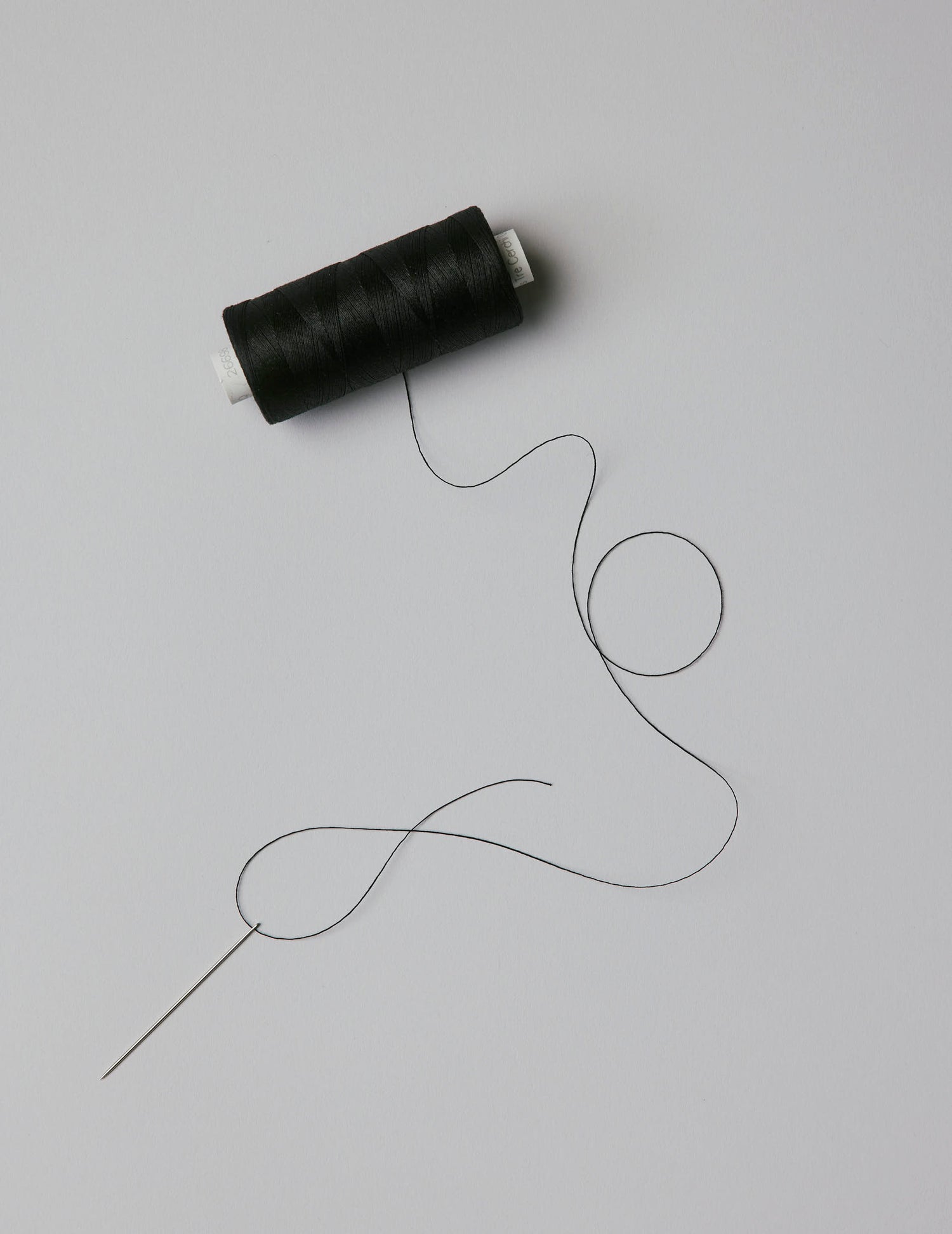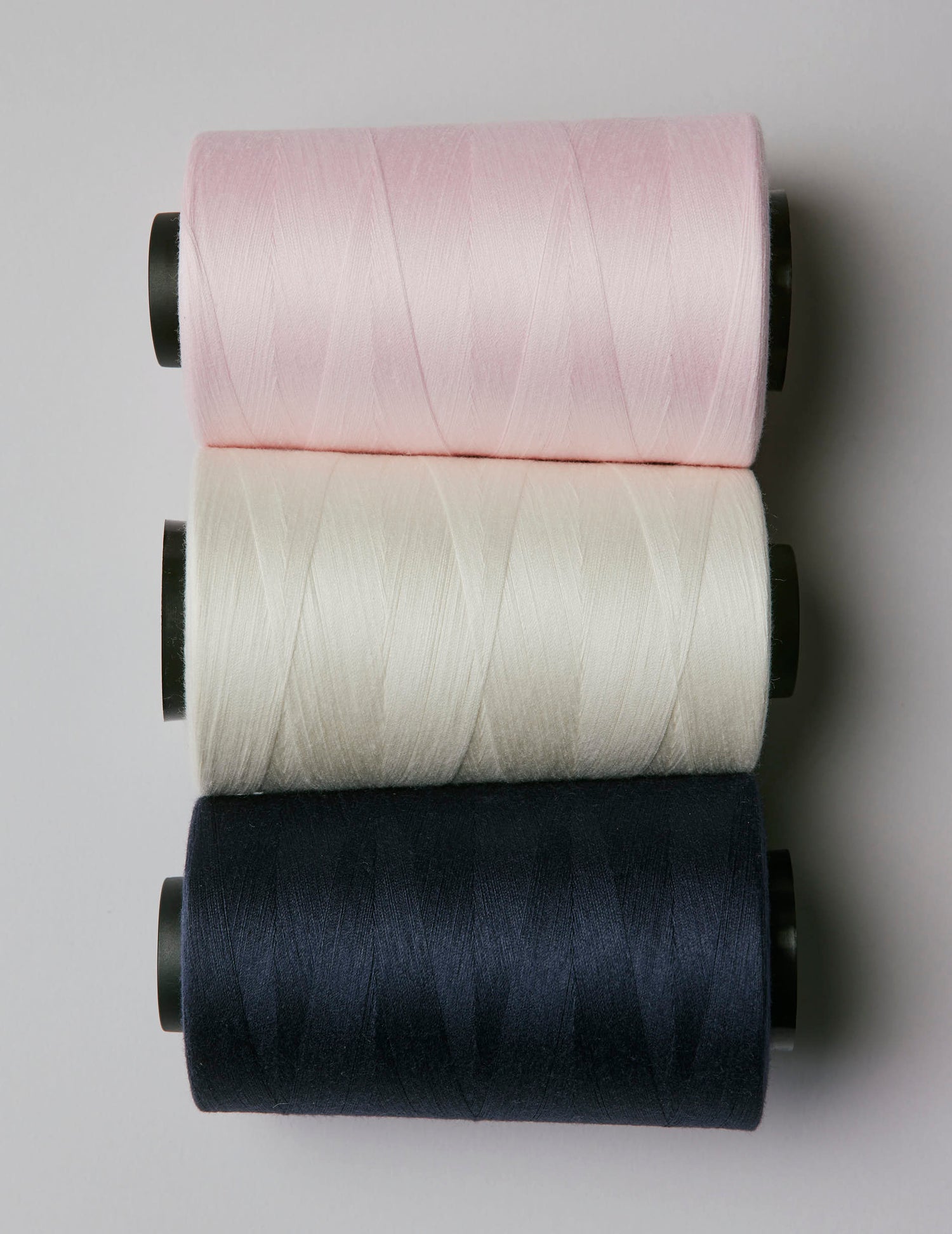Weaving Guide
-
Poplin Weave
See poplin shirtsCotton, wool or silk, poplin is the classic weave, the most used. Woven with a warp thread that is finer than the weft thread, this fabric is pleasant to the touch. The tight and smooth weaving gives it an excellent quality. Poplin is used to make elegant and comfortable shirts.
-
Fil-à-fil
View fil-à-fil shirtsFil-à-fil is a variation of poplin. For weaving we use threads of different colors, one with a dark shade and the other light. We then obtain a light shirt, in a solid color with a mottled appearance. End-on-end is perfect for a summery look.
-
Oxford Weave
See oxford shirtsOxford is a so-called "grain" fabric with a less precise weave than poplin. Often, the weft yarn is colored while the warp yarn is white, which gives the fabric its "checkered" appearance. Robust but soft and easy to care for, oxford is the material of the most casual shirts.
-
Twill Weave
See twill shirtsTo the eye, it stands out thanks to the diagonals formed by the weaving. The twill is resistant and crease-resistant. It is also the fabricused in the manufacture of our denim shirts.
-
Dobby Weave
See dobby shirtsThe dobby is a weaving in relief obtained by crossing various threads, the shaped is the textured fabric par excellence. The effect is subtle and sublimates your plain shirts.
-
Pinpoint
View pinpoint shirtsThinner than oxford, thinner than poplin, pinpoint is supple and durable. Its particularity is linked to the fact that the weft thread passes above two warp threads then above the following two warp threads. A good compromise for a casual shirt but not too much.
-
Denim Weave
See denim shirtsFirst used for trousers and called "toile de Nîmes", denim has since become more popular and is perfect for casual shirts. Dyed with indigo (the color that was called "blue of Genoa", which gave the name "jeans"), this twill weavefabric offers real solidity and fades as it wears. the indigo goes away.
-
Chambray
See chambray shirtsChambray is a fabric constructed on a plain weave and most commonly made of cotton. Quite light, it is close to end-on-end because it is also constructed with a white or ecru weft and an indigo-dyed warp. It is this indigo that takes on a patina that gives this fabric its casual side.
-
Flannel Weave
See flannel shirtsHistorically made of wool, flannel
is a so-called "brushed" fabric. Now mainly in cotton for shirts, it offers a fluffy appearance and a beautiful softness that are very popular in winter. On some models, we add cashmere for an even softer finish.
-
column
See Japanese fabric shirtsPair text with an image to focus on your chosen product, collection, or blog post. Add details on availability, style, or even provide a review.
-
Pique Jersey
See pique jersey shirtsQuilted cotton refers to cotton fabric with diamond, raised, aligned dot or square patterns. This fabric is stretchy, wrinkle-resistant and easy to care for. Its suppleness and softness make it the perfect fabric for a casual shirt.
-
Linen
See linen shirtsComing from Norman and Belgian cultures, our linen is a 100% European product. An exceptional fabric that respects the environment - because it does not require fertilizer or watering, it is breathable, thermo-regulating, durable and biodegradable by nature, it is, moreover, soft and silky in contact with the skin.

Weaving
First ingredient of the shirt, the fabric makes its quality. The construction of the fabric creates the visual aspect of the shirt, and determines its use according to the occasions or the seasons.
Always composed of a warp (threads located along the length of the weave) and a weft (threads located across the width), the fabrics are recognizable and are differentiated by different interlacings between these horizontal and vertical threads.
If an infinity of constructions exist, these are most often part of one of the three main types of weave: canvas (classic, in the shape of a checkerboard), twill (compact and oblique) and satin (shiny because the weft hardly appears).
-
Plain weave
This is the simplest weave since the weft thread passes successively below the warp thread then above it continuously. This type of uniform weaving makes so-called "grain" fabrics, the two sides are identical, there is no back or place.
Poplin is the best example of a plain weave fabric.
-
Satin Weave
The satin weave as its name suggests produces fabrics with a satin effect. The weaving resembles twill since there is only one binding point on each thread except that here these points are scattered to avoid the oblique effect.
-
Twill Armor
This armor is characterized by its oblique lines. This result is obtained thanks to the specific alternation of the threads; the weft thread passes under one or more warp threads then over it a greater number of warp threads, or vice versa. Depending on the weave, the twill can have a weft or warp effect.
Twill fabrics are flexible and easily recognizable thanks to the diagonals formed by the weaving. Note that the back and the place of the fabric are different depending on the weft or warp effect.

The type of wire
There are two main types of thread: single and double twist.
Single thread is created by spinning the yarn on a machine, which is the most basic form but allows for the design of unique fabric patterns.
Double twist, on the other hand, involves twisting two single threads together twice. This technique makes the thread softer, stronger, and increases its diameter, resulting in a higher-quality fabric.
Most of our poplin collection is spun and double twisted for enhanced durability and comfort.

Titration
The count, or "thread count," refers to the quality of the fabric used in the shirt. It measures the fineness of the yarn based on the weight-to-length ratio. A higher count indicates a finer, lighter, and silkier thread, resulting in a more durable and high-quality fabric.














